Ontario's Historical Plaques
at ontarioplaques.com
Learn a little Ontario history as told through its plaques
Oronhyatekha 1841-1907
Oronhyatekha (Peter Martin) (1841-1907)
Christ Church, Her Majesty's Chapel Royal of the Mohawk
and
Christ Church 1843
There are four plaques at this location.
All can be seen on this page.
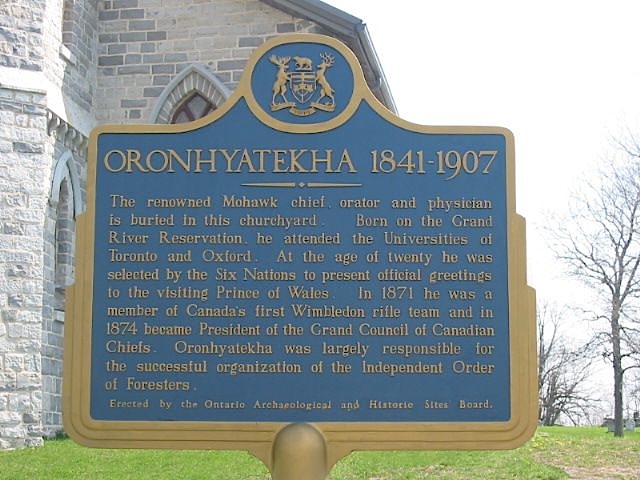
Photo by Alan L Brown - Posted May, 2009
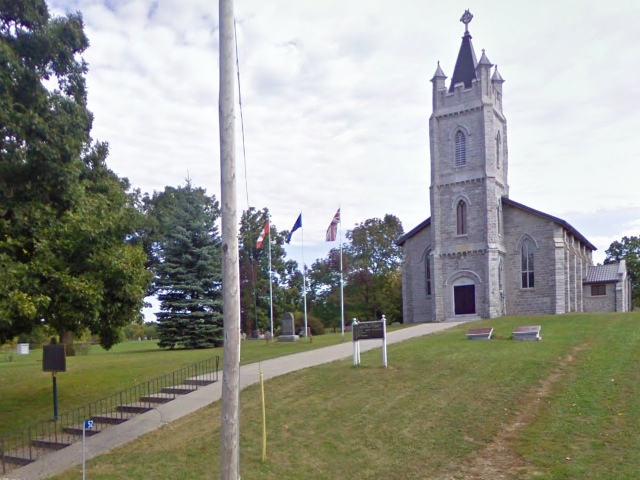
Photo from Google Street View ©2010 Google - Posted December, 2010
Plaque Location
The County of Hastings
Tyendinaga Mohawk Territory
On South Church Lane at street #52
1.5 km from Highway 49 via east on Bayshore Road (Road 16)
then north on South Church Lane
Coordinates: N 44 11.122 W 77 04.420 |
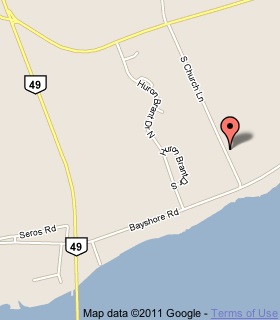 |
Plaque Text
The renowned Mohawk chief, orator and physician is buried in this churchyard. Born on the Grand River Reservation, he attended the Universities of Toronto and Oxford. At the age of twenty he was selected by the Six Nations to present official greetings to the visiting Prince of Wales. In 1871 he was a member of Canada's first Wimbledon rifle team and in 1874 became President of the Grand Council of Canadian Chiefs. Oronhyatekha was largely responsible for the successful organization of the Independent Order of Foresters.
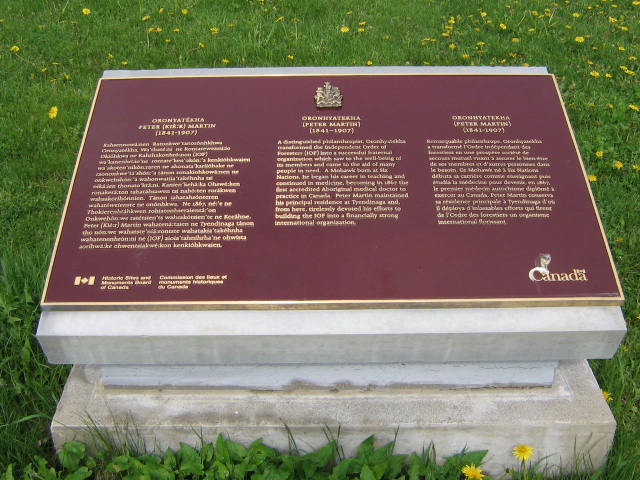
Photo by Alan L Brown - Posted May, 2009
Plaque Text
A distinguished philanthropist, Oronhyatekha transformed the Independent Order of Foresters (IOF) into a successful fraternal organization which saw to the well-being of its members and came to the aid of many people in need. A Mohawk born at Six Nations, he began his career in teaching and continued in medicine, becoming in 1867 the first accredited Aboriginal medical doctor to practice in Canada. Peter Martin maintained his principal residence at Tyendinaga and, from here, tirelessly devoted his efforts to building the IOF into a financially strong international organization.
Related Toronto plaque
Oronhyatekha (Burning Cloud)
More
Information
More
First Nations
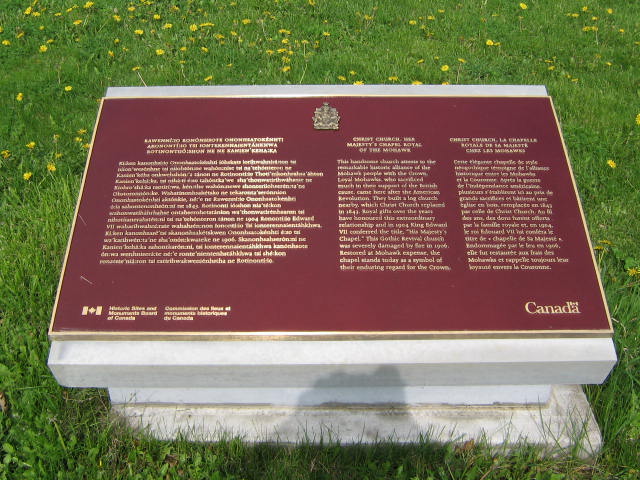
Photo by contributors David & Kellie Clifford - Posted April, 2009
Plaque Text
This handsome church attests to the remarkable historic alliance of the Mohawk people with the Crown. Loyal Mohawks, who sacrificed much in their support of the British cause, came here after the American Revolution. They built a log church nearby, which Christ Church replaced in 1843. Royal gifts over the years have honoured this extraordinary relationship and in 1904 King Edward VII conferred the title, "His Majesty's Chapel". This Gothic Revival church was severely damaged by fire in 1906. Restored at Mohawk expense, the chapel stands today as a symbol of their enduring regard for the Crown.
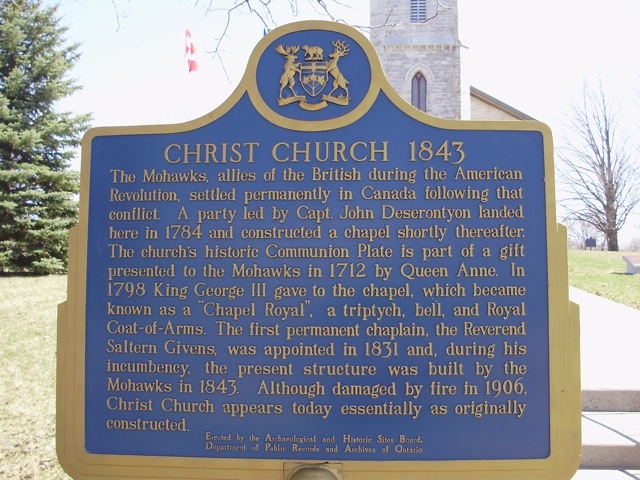
Photo by contributors David & Kellie Clifford - Posted April, 2009
Plaque Text
The Mohawks, allies of the British during the American Revolution, settled permanently in Canada following that conflict. A party led by Capt. John Deserontyon landed here in 1784 and constructed a chapel shortly thereafter. The church's historic Communion Plate is part of a gift presented to the Mohawks in 1712 by Queen Anne. In 1798 King George III gave to the chapel, which became known as a "Chapel Royal," a triptych, bell and Royal Coat-of-Arms. The first permanent chaplain, the Reverend Saltern Givens, was appointed in 1831 and, during his incumbency, the present structure was built by the Mohawks in 1843. Although damaged by fire in 1906, Christ Church appears today essentially as originally constructed.
Related Ontario plaque
Her Majesty's Chapel of the Mohawks
More
Information
More
Churches
Here are the visitors' comments for this page.
(none yet)
Here's where you can write a comment for this page.
Note: If you wish to ask me a question, please use the email link in the menu.
Note: Comments are moderated. Yours will appear on this page within 24 hours
(usually much sooner).
Note: As soon as the comment is posted, a link to it will appear on the home page in the section "Here are the 10 latest plaque pages with a new comment added by a visitor to this site."